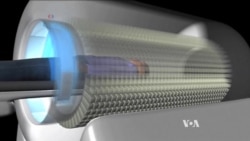A new full body PET scanner is being developed that could revolutionize how scientists see the inner workings of the human body, possibly leading to the development of better and safer drugs to target diseases such as cancer, heart disease and brain disorders.
Unlike X-rays and MRI’s, which provide images of bones and organs, PET scans are used to diagnose and track diseases by illustrating how organs and tissues function. But current PET scanners image only parts of the body.
A research team from the University of California Davis has received a $15.5 million grant from the National Institutes of Health to build this first supersized PET scanner called “Explorer.”
“We’re a system of organs, and all of the organs interact with each other,” said radiology professor Ramsey Badawi. “And we’ve never really been able to interrogate that with imaging before, and now we are going to be able to look at that.”
"We are able to say something about what the cells in the body are doing, how actively they are metabolizing, or how quickly they are dividing," said Simon Cherry, a biomedical engineering professor. "Taking a cancer example, that could be tremendously powerful to see when you give a drug whether that shuts down the metabolism of the tumor.”
PET scans use a radioactive substance to locate tumors and evidence of other diseases. Explorer employs much less radiation then the current PET tests, and captures images more quickly.
“We can do scans in 30 seconds that currently take 20 minutes,” Cherry explained. “Or we can drop the radiation dose significantly, and do scans at a fraction of the radiation dose that we currently do them at.”
The researchers say the information from Explorer could lead to new targeted medicines, and minimize harmful side effects by tracking the movement of therapies through the body.
They hope to test the one-of-a-kind scanner in human trials in three years.









